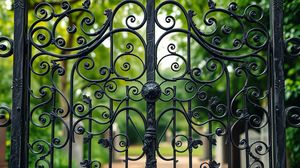
Bunhill Fields in Islington, London, is a historic burial ground with a rich history dating back to the 17th century. Originally, the site was used as a field for deposit of bones from the charnel house at St. Paul's Cathedral, giving the site its name, which is believed to be derived from "Bone Hill".
The burial ground became nonconformist in nature after it opened in 1665, serving as the final resting place for many Protestant dissenters. This heritage sets Bunhill Fields apart as a significant symbol of religious diversity and tolerance during a time of much stricter Anglican conformity.
Among its notable interments, Bunhill Fields houses the graves of some of Britain's most influential writers and thinkers. The esteemed poet and painter William Blake and author Daniel Defoe are both buried here, attracting history enthusiasts and literary fans alike.
Interestingly, John Bunyan, the author of "The Pilgrim's Progress" is also interred in Bunhill Fields. His works have inspired not just readers in Britain but across the globe, making his grave a site of pilgrimage for many.
In the 19th century, the site was closed for burials, but its significance was recognized, and it became a protected garden and public park. This transformation preserved its serene atmosphere amidst the bustling cityscape of London, creating a peaceful refuge for contemplation and reflection.
Few realize that Bunhill Fields has been a part of numerous artworks and references throughout history, capturing the imaginations of artists and writers who have drawn inspiration from its quiet charm and storied past.
Without delving into fantasy, it's intriguing to note that some original headstones appear slightly misaligned, believed to have been moved during developments to the site, adding an authentic rustic aura to the scenery.

Making the Most of Your Visit:
Take a moment to appreciate the unique atmosphere: Although it's in the middle of bustling Islington, Bunhill Fields offers a surprisingly peaceful escape. Slow down and soak in the quiet; it has a calming early morning vibe, especially if you visit on a weekday.
Look out for the famous graves: Spotting William Blake's and Daniel Defoe's famous graves isn't that difficult, but you'll get more out of your visit if you come prepared with a bit of background on their lives. This adds a personal connection when you find their tombstones.
Notice the quirky details: Some headstones are noticeably askew, giving the place a charming, slightly eerie feel. Think of these as an unintentional historical artifact from the maintenance and refurbishments over centuries.
Engage with the sculpture: Nearby, on City Road towards Finsbury Square, find the beautiful statue of John Bunyan, dressed as a pilgrim. Many visitors miss it, but it adds another layer to the experience, tying together the area's historical narrative.
Ponder at the plaque: There's a small plaque commemorating the last burial in Bunhill Fields. It isn't immediately obvious, but if you can find it, it's a sobering reminder of the closure of the graveyard and a reflection on the passage of time.

Visiting Times & Costs:
Bunhill Fields is open to the public, providing a tranquil space for visitors to explore at their leisure. It is generally open from early morning until dusk, allowing ample time for exploration.
Entry to Bunhill Fields is free, making it an accessible destination for anyone interested in its historical and cultural significance.
Regarding accessibility, Bunhill Fields has pathways that are generally suitable for those with mobility issues, but some areas might be uneven due to the historic nature of the site. Visitors are advised to exercise caution when navigating these sections.

Address & Map:

Nearby:























